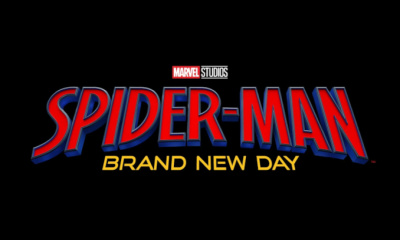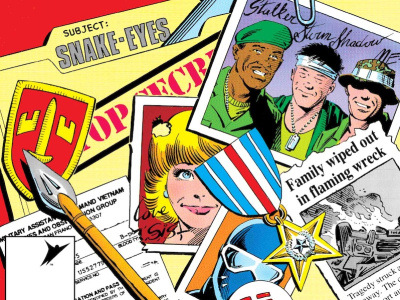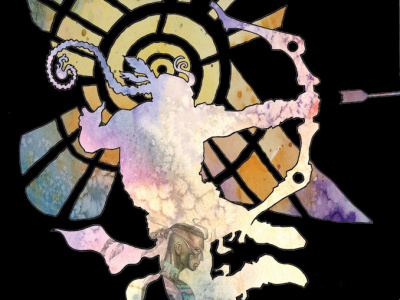
ICv2 recently spoke with Dark Horse CEO Mike Richardson to talk about comics and graphic novels, the economy, comics on the Web, creators rights, Clamp, the Dark Horse Emmy, and more.
In Part One, we talk about the state of the graphic novel market; the future of the pamphlet; trends within the shojo market; and potential for attracting shojo fans to other material.
In Part Two, we talk about the different impacts of the economy on comics and graphic novels;
In Part Three, we talk about the impact of illegal filesharing on comic sales; the role of social networking sites; Dark Horse’s Clamp project in 2009; and the role of anthologies.
In Part Four, we discuss the Dark Horse Emmy, and its film and TV projects;
What’s the current state of the graphic novel market from your perspective?
Obviously, with the economy going the way it is, we all have to be careful. I think we’ve seen some graphic novels in certain areas of the market that certain trends may be changing. As far as Dark Horse goes, we’ve had three consecutive years of increased growth, and it looks like this year will be the same. We’re watching the market carefully.
The biggest area of growth was the graphic novel the last few years, and I think that trend’s going to continue. The area that’s led that growth--the bookstore manga, particularly shojo--seems to be abating somewhat. I think we’re seeing that some of the companies that came into that market have experienced less robust sales than they’ve seen in the past. I think that spreads across the board for manga sales. Because Dark Horse has been in a different area from a lot of the manga that is responsible for the primary sales in the bookstore market, we’ve avoided that particular downturn. Our manga also tends to be much stronger in the comic market than some of the manga that has been strong in the bookstores. So hopefully we will continue to be at least buffered a bit from that downturn.
As for other types of graphic novels, those seem to be experiencing stronger sales, and maybe it’s the bookstores that have realized that this is a growing area of sales for them as a category. We’ve heard a lot of encouraging news, for instance the discussion of the addition of children’s graphic novel sections, and certain titles that the bookstores are very eager to receive. A lot of it is media based. They like familiar titles. They like titles where they feel there is less risk; certainly Star Wars and Buffy have been big successes for us.
As far as pamphlets--especially with what I see happening with the economy-- as much as we all love them, the traditional comic book is going to be going to harder and harder to sell, and harder and harder to make work. And as I’ve said many times, that particular format is a product of a time that doesn’t exist anymore. They started out as cheap reprints of newspaper strips and now they’ve become relatively expensive packages for the marketplace.
We love comics and they’ll always be a part of the comic book marketplace (again, I’m talking about the pamphlets). Our audience is great. One study showed that the average comic readers was in his mid-20s, not in his mid-teens. To me that indicates that that kind of a buyer--25, or even 35 or even 45--would rather have a book on a shelf than a pamphlet in a box. In addition, the idea of getting stories at 20 to 22 pages 30 days a part for a continued story doesn’t seem the best way to read for this particular fan and core reader. I see that the perception of value for the traditional pamphlet [becoming a less] effective way to sell graphic storytelling. It’s hard to be too highfalutin in my description, but comics cost a dime at one time, and now they’re at $2.99. I can’t help but think that’s going to jump pretty quickly with the increases in prices all the way across the board.
You mentioned that you think shojo sales are declining. Why do you think that is?
A couple of reasons. I think that much of the best material has been released. I think the overall level of quality has probably dropped somewhat. Also, so many people entered that market, and for real fans of shojo--their pocketbooks are strained in the attempt to keep up with all the assorted series. A number of companies jumped into that market and crowded it. When you’re talking roughly $10 a pop, at some point, particularly in a tough economy, that’s going to be a tight market and that the quality will win out and a lot of the other books will fall away.
Do you have any feeling about where shojo fans are graduating to? This is a continuing question that publishers are dealing with: how to retain those teen girl readers as they age. What’s your feel on that situation?
The most simplistic answer is to say what we’ve always said: if you publish a wide variety of material for a wide variety of interests, you will find readers. The idea is that there are different types of stories and genres that could attract those readers, but how do you get them distributed? Oftentimes you will try to break into a new market and put material out there for a specific new market and for understandable reasons, retailers are reluctant to stock those particular books.
I think that shojo is an interesting test of whether we can keep those readers, because they came to the market for specific material. When you try to create material for that reader, I don’t know that there’s one type of graphic novel they’ll like. I think the trend toward what some call “comics lit” might be one direction those readers can go to as they mature, because there’s a variety of subject matter, a variety of graphic novel material that might be of interest to an older female reader. I guess maybe it’s better to call them “alternative comics” (I hate putting these labels on these, but for the sake of the conversation, I use them to describe what I’m talking about), but it’s comics, non-mainstream-superhero-action-male-oriented comics. There’s a lot of very good graphic novels that are coming out that seem to me would interesting to that particular audience. And a lot of material that’s written with a voice that could be heard by girls that are graduating from the shojo.
Certainly with Dark Horse, we’re trying to publish a variety of genres and material, and that’s an audience we’d like to find a particular niche to fill there.
What about Buffy? Do you think that might appeal to a female reader who is graduating from manga?
I think it could, but I don’t think if they’re coming off shojo that’s exactly what they’re looking for. Certainly Joss [Whedon] writes great stories and if they give it a break and take a chance with it, it will do quite well. I think Buffy does have a lot of female readers, but again, the shojo readers are coming from a different place in their comics reading. Yeah, if we can get the message to them and get it out there, I’m sure many of them would respond to it.







